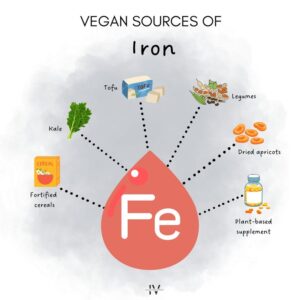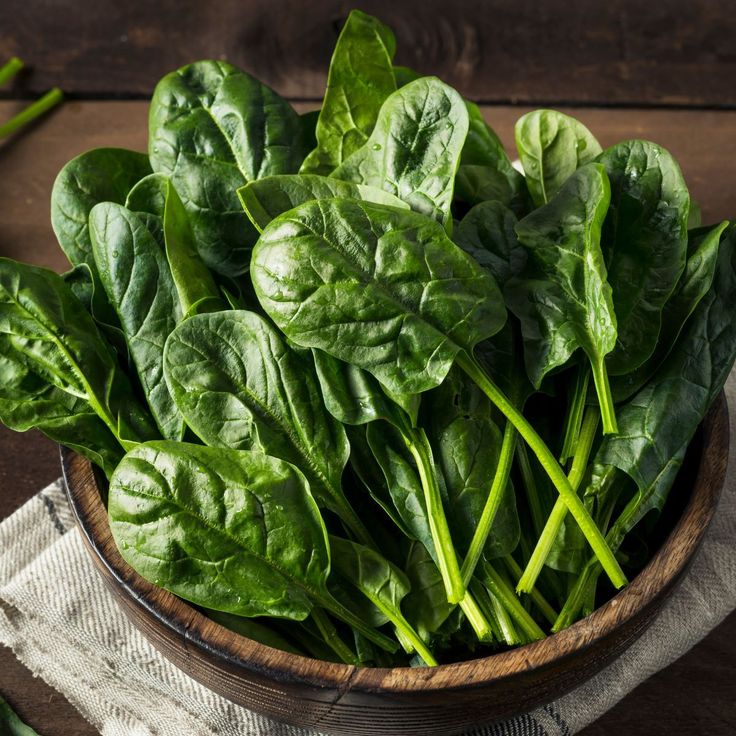Iron is a crucial mineral that is essential in many bodily functions. This includes making hemoglobin, which transports oxygen through the blood. It is also critical to the development of immunity, cognitive development, and the production of energy. Iron can be found in animal and plant foods, so those who follow a vegan lifestyle often must be aware of their iron intake. The reason is that plant-based sources of iron are generally less readily absorbed by the body than animal-based sources. However, with some planning, you can meet your iron needs with a vegan-friendly diet. This article on increasing iron intake will provide tips on how it is possible to increase iron intake while on a vegan diet. It will also discuss the excellent foods, methods to boost absorption, and strategies to incorporate these food items into your daily routine.
Understanding Iron and Its Importance
It is considered a trace mineral, meaning your body needs it in tiny amounts. However, it is vital to live. The two major types of iron in the diet are:
- Heme Iron is found in animal products such as chicken, red meat, and fish. It is much easier to absorb into the body.
- Non-heme iron is found in plant-based foods like beans, grains, fruits, vegetables, nuts, and seeds. It isn’t easily absorbed by our bodies, which is why it is essential for people who follow an organic diet to discover ways to maximize its absorption.
Iron’s daily amount (RDA) differs according to gender, age, and life stage. However, adult women generally require more iron than males due to menstrual blood loss. For instance, women between 19 and 50 are advised to take 18 milligrams of iron daily. In contrast, men of similar age require just 8 mg. Women expecting babies have more significant demands, with a requirement of 27 mg daily because of the increased blood volume and demands for iron for the fetus’s development.
Optimal Vegan Sources of Iron

A wide range of plant-based meals are high in iron. Incorporating a variety of these food items in your diet will ensure an increased intake of iron:
Legumes
The legumes of beans, lentils, chickpeas, soybeans, and chickpeas are excellent sources of iron. One cup cooked with lentils has approximately 6.6 milligrams of iron. In addition, they are high in fiber, protein, and other vital nutrients, making them an essential component of a healthy vegan diet.
Tempeh and Tempeh
Tempeh and Tofu: These soy-based items aren’t just rich in protein and iron. Half a cup of tofu is approximately 3.4 milligrams of iron, while half a cup of tempeh has around 2.2 mg.
Dark Leafy Greens

The three greens, spinach, kale, Swiss chard, and collard greens, are rich in non-heme iron. For instance, one cup of cooked spinach has 6.4 mg of iron. Even though spinach contains oxalates which may hinder the absorption of iron However, its iron material remains an excellent addition to your diet.
Nuts and seeds
The pumpkin, hemp, sesame, and chia seeds are high in iron. A quarter cup of pumpkin seeds is around 2.5 milligrams of iron. Almonds, cashews, and pine nuts focus on providing plenty of iron.
Whole grain
Quinoa, brown rice oatmeal, and whole-wheat bread can all be rich in iron. Quinoanutrient-rich grain that can provide 2.8 mg of iron in a cooked cup. Whole grains also contain protein, fiber, and various other minerals.
Fortified Foods:
Various plant-based alternatives (almond milk, soy milk, and Oat milk) and breakfast cereals are fortified with iron and other nutrients. Read the labels to discover choices that will benefit from boosting the iron material of your diet.
Dried Fruits:
Dried raisins, apricots, and prunes are packed with high iron levels. A half cup of dried apricots contains around 2.4 milligrams of iron. Eating dried fruits in moderation is essential due to their sugar material.
Vegetables

Certain vegetables, such as broccoli, potato skins (with skin), and Brussels sprouts, contain significant quantities of iron. A giant potato with skin contains approximately 2.7 milligrams of iron.
Seaweed
Varieties such as nori and kelp deliver iron and various trace minerals. A tablespoon of spirulina powder contains approximately 2 mg of iron.
Enhancing Iron Absorption
The absorption of iron from plants can be affected by many aspects of diet. Here are some suggestions to improve iron absorption from non-heme iron
Combine iron-rich foods that are rich in iron with Vitamin C:
Vitamin C is a powerful booster for the non-heme absorbance of iron. Because iron-rich foods increase iron absorption, include vitamin C-rich foods like bell peppers, citrus fruits (oranges or kiwis, strawberries), tomatoes, and broccoli with a meal. For instance, lemon juice in an oat salad, an orange juice glass, and oatmeal can improve iron absorption.
Avoid inhibitors of iron Absorption.
Certain chemicals interfere with iron absorption. These include phytates (found within whole grain as well as legumes and nuts) and calcium (in dairy products and supplemented plant milk), as well as polyphenols (in coffee, tea, and certain herbs) that can hinder iron absorption when taken in huge quantities. To maximize iron intake, eat these inhibitors separately from meals containing iron. For instance, you can drink tea or coffee at mealtimes instead of with them.
Fermented Foods, as well as sprouting
Fermenting and sprouting grains, beans, grains, and seeds can lower the levels of phytates and make iron more accessible for absorption. Fermented foods such as tempeh, bread made from sourdough, sprouted grains, and legumes are great options.
Techniques for Cooking

Cooking may decrease the level of phytate material in food, thereby increasing iron absorption. For example, cooking vegetables in steam or boiling can boost the amount of bioavailable iron. Cooking using cast iron cookware can also raise the levels of iron material in food items, particularly when cooking food with acidic ingredients like tomato sauce.
Consume smaller portions and more frequent meals that are iron-rich
Eating iron-rich foods in smaller, less frequent meals instead of massive quantities at once could increase absorption effectiveness. This method can be particularly advantageous if you have to take care of iron absorption.
Sample Meal Strategy for Boosting Iron Intake
Here’s a vegan sample menu plan that is designed to benefit and improve iron consumption all day long:
Breakfast:
- Iron-fortified cereal: A bowl of iron-fortified cereal, accompanied by an ounce of plant milk fortified (like soy milk or almond milk) and a handful of fresh fruits (rich with vitamin C) for improved absorption.
- Smoothie: A green smoothie consisting of spinach and a banana. It also includes a teaspoon of chia seeds and a squeeze of orange juice for extra vitamin C.
Lunch:
- Quinoa Salad: A salad that includes cooked quinoa, chickpeas, quinoa, chopped cherry tomatoes, kale cucumber, and a dressing made of lemon-tahini. The vitamin C material in the lemon juice helps to increase the iron absorption of quinoa and chickpeas.
- The other side of Sauteed Spinach: Sauteed spinach with garlic and a pinch of sesame seeds to add flavor and iron material.
Snack:
- Trail Mix Is a mixture of dried raisins, dried apricots, pumpkin seeds, almonds, and dark chocolate chips. Dried seeds and dried fruits are excellent sources of iron.
- Fruit is an orange or kiwi fruit that increases vitamin C intake and helps with iron absorption.
Dinner:
- Lentil Stew A rich stew with potatoes, carrots, lentils and spinach cooked in a tomato broth. They favor vitamin C and benefit from increased iron absorption by the spinach and lentils.
- Whole Grain Bread: A slice from whole grain bread that will enhance meals and help provide extra iron.
- Broccoli side dish: Broccoli should be steamed and drizzled with lemon juice and olive oil for extra flavor and Vitamin C.
Dessert:
- Dark Chocolate: A small amount of dark chocolate that has iron in it and is served with fresh strawberries.
Monitoring Iron Levels

While it’s possible to satisfy iron requirements through a vegan diet, it’s essential to monitor iron levels frequently, especially for those who are more at risk of being deficient, for example, pregnant women, young children, and sportsmen. The signs of iron deficiency include weakness, fatigue, skin tone, pale complexion, shortness of breath, dizziness, headaches, and fatigue. If you suspect iron deficiency, consult an experienced medical professional for the appropriate test and advice.
Supplements
In some instances, dietary iron alone might not be enough to meet the individual’s needs, mainly when there is a problem with absorption or a greater demand for iron. Iron supplements are a possibility in conjunction with an experienced healthcare professional. It is important not to diagnose or supplement with iron supplements without well-qualified guidance since excessive iron intake can result in toxicities and health problems.
Conclusion
The process of increasing iron intake in vegan diets requires some knowledge as well as careful preparation. However, it’s possible with a balanced and diverse diet. By focusing on foods rich in iron, optimizing iron absorption through eating habits, and paying attention to your body’s requirements and requirements, you can maintain your iron levels while enjoying the many health benefits of the vegan diet. Monitor your iron levels, pay attention to your body, and take skillful assistance if required. By following these tips, you’ll be able to satisfy your iron requirements while adhering to an organic diet.
FAQs
1. What is the significance of iron, and what is it doing to your body?
Iron is a vital mineral that plays a crucial role in making hemoglobin, a protein found in red blood cells that transports oxygen out of the lungs into the other parts of your body. It also aids metabolism, cognition, immune health, and energy production. Suppose there aren’t sufficient iron body cells. In that case, producing enough red blood cells is difficult, leading to fatigue and other manifestations of anemia due to iron deficiency.
2. What are the signs that iron deficiencies cause?
Common signs of iron deficiency are weakness, fatigue, pale skin, breathlessness, headaches, dizziness, feet and hands that are cold, as well as brittle nails and cravings for substances that are not nutritious (a condition referred to by the name pica). If you notice these symptoms, seek a medical professional to ensure accurate diagnostics and treatments.
3. Do I obtain satisfying iron through eating a Vegan diet?
It is indeed possible to obtain sufficient iron through a vegan diet. While plant-based sources do not contain heme iron, it is not as readily absorbed as the iron from animal sources. Eating various iron-rich food items and using strategies to increase iron absorption can help you meet your iron requirements.
4. Which are the desirable iron-rich foods that are vegan?
The accurate iron sources that are vegan comprise:
- Legumes (e.g., chickpeas, lentils, beans)
- Tofu and tempeh
- Dark leafy greens (e.g., spinach, kale, swiss chard)
- The nuts, as well as the seeds (e.g., sesame seeds, pumpkin seeds, cashews)
- Whole grain (e.g., quinoa oatmeal, brown rice)
- Foods that are fortified (e.g., plant-based milk cereals for breakfast)
- Dry fruits (e.g. Apricots, apricots prunes, raisins)
- Vegetables (e.g., broccoli with skin, potatoes, Brussels sprouts)
- Seaweed (e.g., nori, spirulina)
5. Can I improve iron absorption while on a vegetarian diet?
To enhance iron absorption:
- Mix iron-rich foods with foods high in vitamin C (e.g., bell peppers, tomatoes, citrus fruits).
- Avoid drinking iron inhibitors such as tea, coffee, or calcium-rich foods with iron-rich meals.
- Include sprouted and fermented foods to lower phytates, which could hinder iron absorption.
- Cook using cooking equipment made of cast iron to boost your iron material for food items.
- Steam or cook vegetables to make iron more bio-available.
